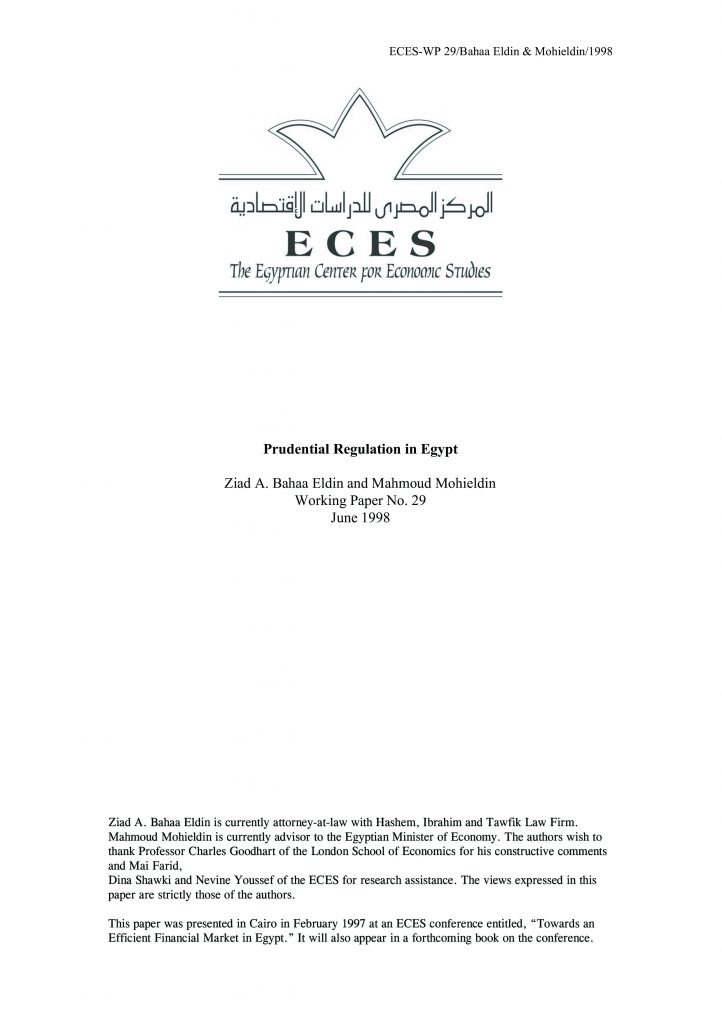Abstract:
The rapid liberalization of Egypt’s financial sector demands maintaining the safety and stability of the banking system through prudential regulation. The justification for prudential regulation stems from the shortcomings of laissez-faire banking. Prudential policy generally seeks to prevent systemic risk, minimize financial instability, and ensure that financial intermediaries are adequately capitalized and professionally managed.
Revolutionary changes in banking services and practices have, however, revived concerns about the adequacy of prudential regulation. Juxtaposing the Egyptian situation with comparable world practice and experience brings to light the significant regulatory weaknesses of the Egyptian system. Understanding these weaknesses and their causes requires knowledge of the basic concepts underlying prudential measures, their classification, rationale and place in the changing world environment.
The authors clarify these points and address in particular the failure of Islamic Investment Companies (IICs) in Egypt in the 1980s, limits on the scope of bank activities, the regulation of multinational banking, capital adequacy and liquidity requirements, provisioning and information disclosure, the lender-of-last-resort function of the Central Bank of Egypt, and the deposit insurance scheme.

